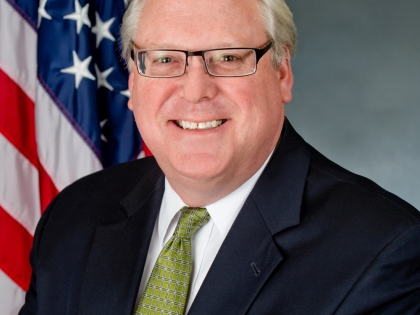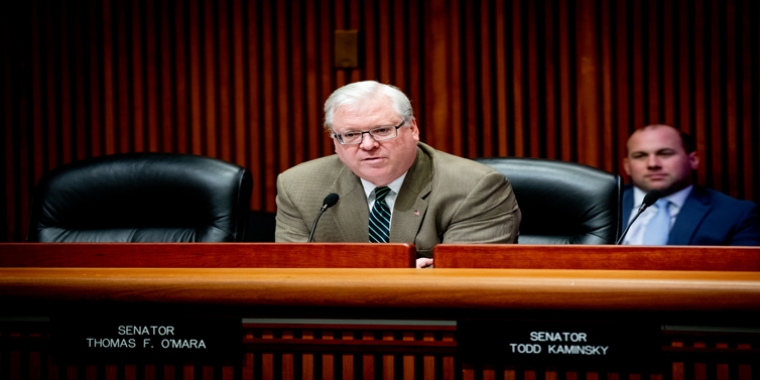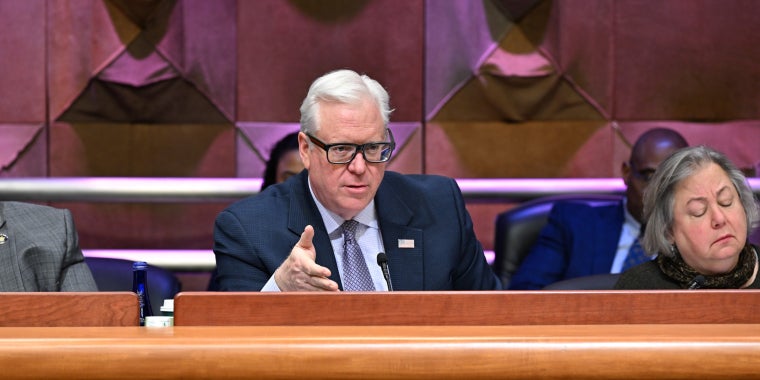
O’Mara continues to denounce plan by Cuomo, legislative leaders: State government ‘out of touch and out of control’
March 25, 2019
-
ISSUE:
- New York State budget

Albany, N.Y., March 25—State Senator Tom O’Mara (R,C,I-Big Flats) today continued to denounce a move by Governor Andrew Cuomo and New York’s Democratic legislative leaders to restore a proposed cut to critical state funding for area towns and villages by imposing yet another unfunded state mandate on counties.
O’Mara has called the proposed cost shift, which the New York State Association of Counties (NYSAC) fears will be part of the final 2019-2020 state budget, the latest example of a state government that’s “out of touch and out of control.” Negotiations over this year’s state budget are entering the final week before the April 1 start of New York’s new fiscal year.
O’Mara said, “Here’s what Governor Cuomo and the Legislature’s Democrats are calling a budget plan: another new tax and another unfunded state mandate dumped on top of what’s already one of the biggest piles of taxes and unfunded mandates in America. This is government out of touch and out of control. Governor Cuomo and legislative leaders once again appear ready to ignore the burden already facing upstate local property taxpayers and shirk another state responsibility.”
In the governor’s initial 2019-20 proposed Executive Budget released in January, the governor unexpectedly called for the elimination of approximately $60-million in Aid and Incentives to Municipalities (AIM) funding for most of the towns and villages across the Southern Tier and Finger Lakes regions, and statewide. AIM is the largest single source of state revenue sharing for these localities. The Cuomo cut would result in the elimination of AIM for 1,328 of New York’s 1,465 towns and villages.
After O’Mara and many other state legislators, town supervisors, village mayors, and other local leaders voiced strong opposition, the governor reversed course in February and amended his original budget plan to restore the AIM cut by shifting the cost responsibility from the state to counties.
Specifically, the governor now wants counties to pick up the cost of AIM for towns and villages and pay for it with new revenue from his proposed internet sales tax. The Democratic leaders in the Senate and Assembly appear ready to go along with the governor.
In a statement late last week, NYSAC President Charles H. Nesbitt, Jr. said, “County officials are doing everything we can to control local spending. We have reduced our workforce, implemented enhanced shared service programs, consolidated departments and programs, and cut services. However, we cannot achieve any success with continued state interference in local home rule affairs. The Governor's proposed cost shifts, mandates, and cuts will actually consume more than any anticipated new sales tax revenue. It's a shell game and business as usual."
NYSAC Executive Director Stephen J. Acquario added, "Using local revenues to pay for state programs is the reason New Yorkers suffer from the highest property tax burden in the country. The state takes local tax dollars and uses them at the state level. These are state property taxes, not county property taxes. And unfortunately, this will only become worse if lawmakers do not reverse the proposed new mandates, cost shifts and program expansions being proposed in this budget."
According to NYSAC, Cuomo and Democratic leaders in the Senate and Assembly are considering more than $200 million in new costs for counties. Most of the new costs would result from requiring counties to cover the cost of restoring the AIM funding. NYSAC said other new mandates include early voting, cashless bail, and a new lead monitoring program.
Share this Article or Press Release
Newsroom
Go to Newsroom


